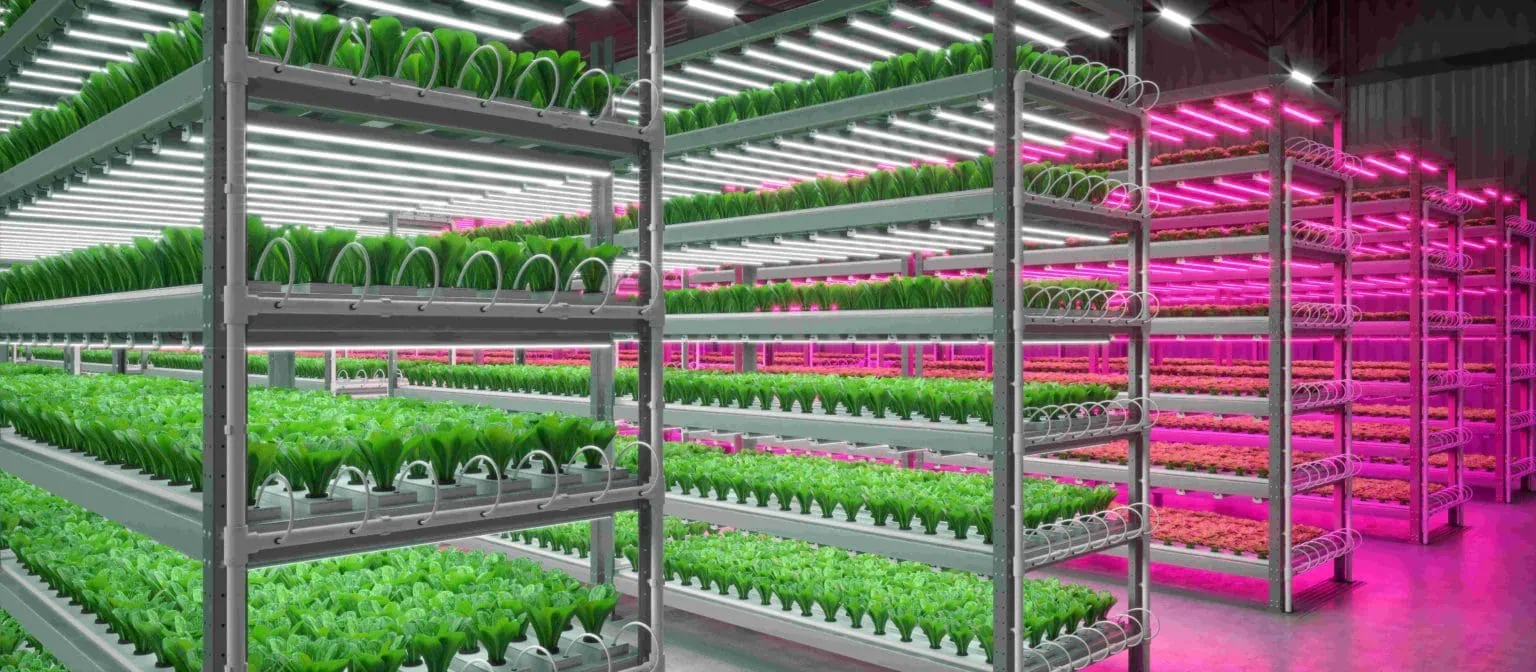Indoor Hydroponic Systems and Precision CO2 Control

Hydroponics has become one of the most significant innovations in modern agriculture. By eliminating soil and tightly controlling environmental conditions, growers can achieve faster growth rates, higher yields, and more efficient use of resources. The combination of automated nutrient delivery, artificial lighting, and precise gas control allows for year-round crop production in almost any location.
Challenge
The need for controlled and efficient indoor farming
In enclosed systems, plants quickly consume available CO2, causing concentrations to drop below ambient levels. This slows photosynthesis and limits growth. Greenhouse research shows that enriching CO2 concentrations from approximately 400 ppm to between 1,000 and 2,000 ppm can significantly increase crop productivity and quality (World Journal of Advanced Research and Reviews, 2024).
Growers and researchers therefore require instruments capable of maintaining precise, repeatable CO2 levels in closed environments while minimizing waste.
Options
- Passive CO2 diffusion from ambient air, which is simple but inconsistent and insufficient for dense plant populations.
- Manual CO2 injection using timers or on-demand release systems, which improves growth but lacks feedback control and wastes gas.
- Integrated monitoring systems that use sensors to track temperature, humidity, and CO2 levels, but require accurate flow control to be effective.
These methods work to varying degrees but often lack the precision required for research or high-value crop production. Without continuous measurement and regulation, CO2 levels can fluctuate, creating inconsistent growth conditions and variable yields.
Selection
Mass flow control for precision gas delivery
Each gas served a defined function. Nitrogen and oxygen supported plant respiration and health, while carbon dioxide was metered at up to 10 SCCM to achieve controlled enrichment within the 1000 – 2000 ppm range, depending on total flow volume.
The MC-Series provided closed-loop precision, maintaining steady flow rates across all channels regardless of downstream pressure fluctuations. This ensured that plants received consistent environmental conditions across every trial.
For larger facilities or studies requiring more complex gas combinations, systems such as Alicat’s FusionFlow™ MXM gas blending system can automate gas mixing tasks on up to ten channels simultaneously. The MXM’s integrated scheduling and web-based control interface make it ideal for long-term hydroponic research, where environmental conditions need to shift automatically throughout growth cycles.
Outcome
Automated control reduced manual intervention, stabilized chamber conditions, and provided reliable data for evaluating how the plants responded to controlled gas enrichment.
Hydroponics continues to evolve as a cornerstone of sustainable agriculture, offering growers control over every aspect of plant development. Through precise gas delivery, systems powered make that control measurable, repeatable, and scalable—paving the way for more efficient, sustainable food production in both research and commercial settings.
References
- Advantages of Hydroponic Farming Systems. National Library of Medicine (PMC10625363), 2023. Available at: https://pmc.ncbi.nlm.nih.gov/articles/PMC10625363/
- Optimization of CO₂ Concentration for Improved Growth and Productivity in Hydroponic and Greenhouse Systems. World Journal of Advanced Research and Reviews, 2024, Vol. 23(2), pp. 2634–2686.